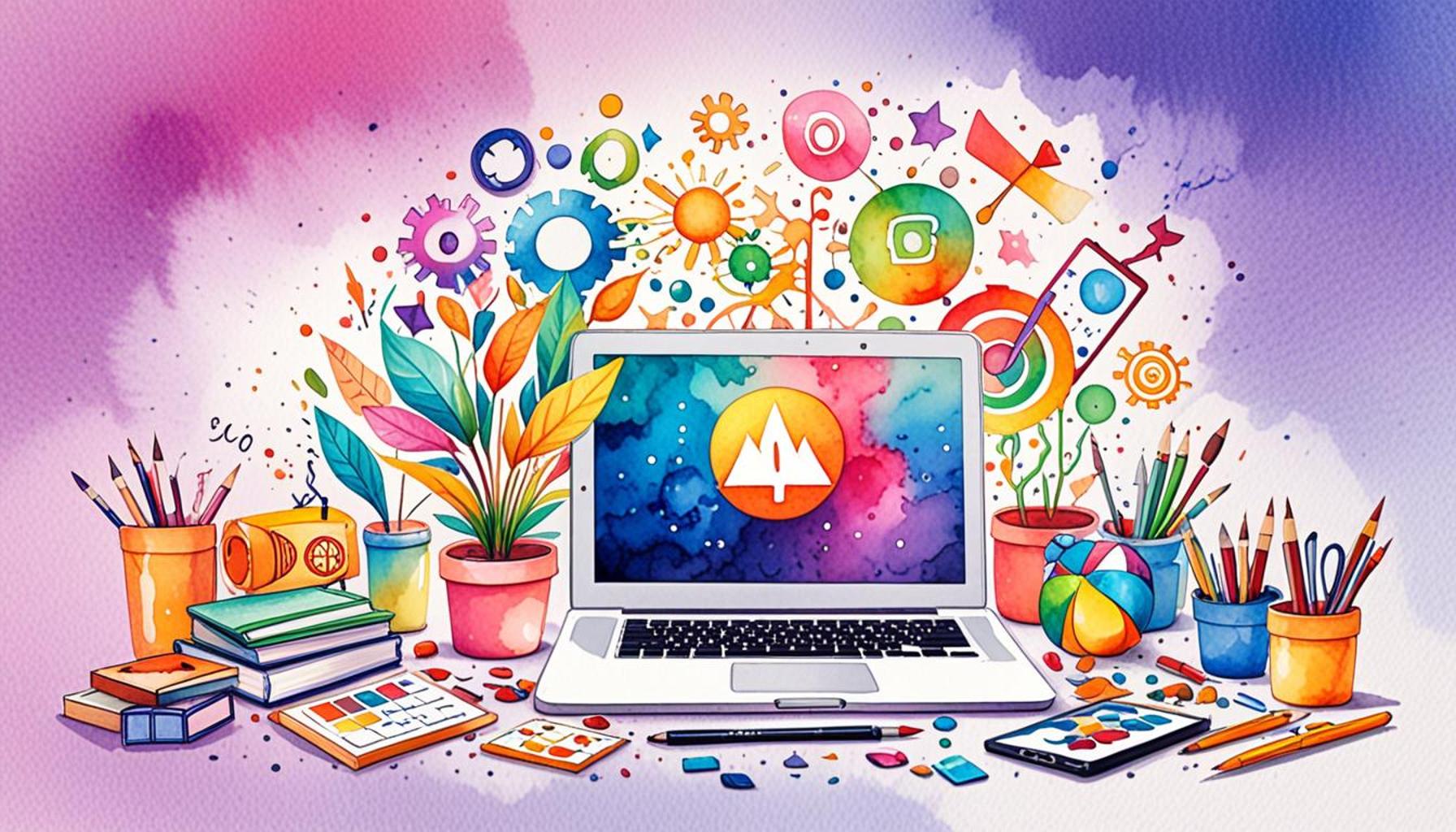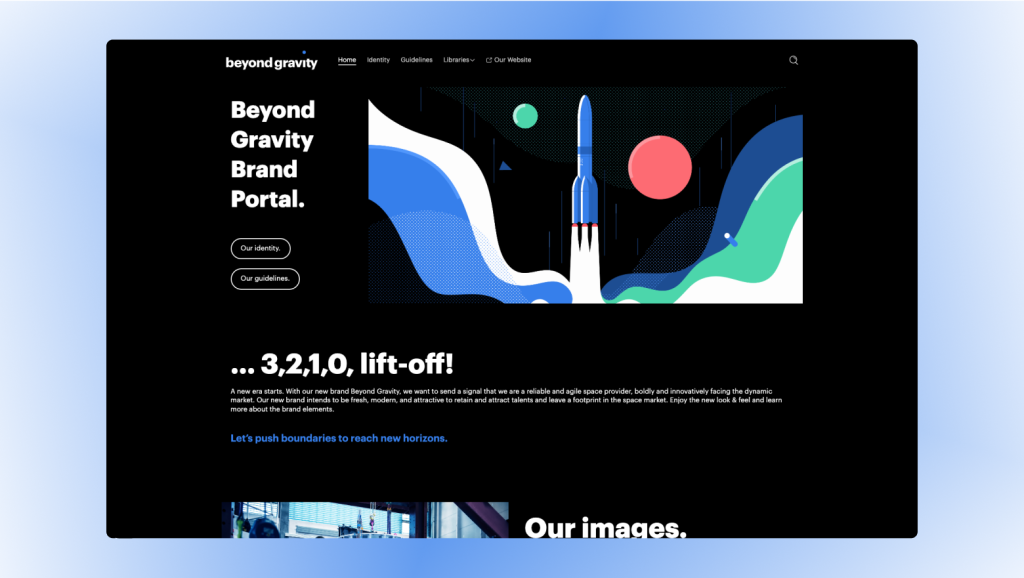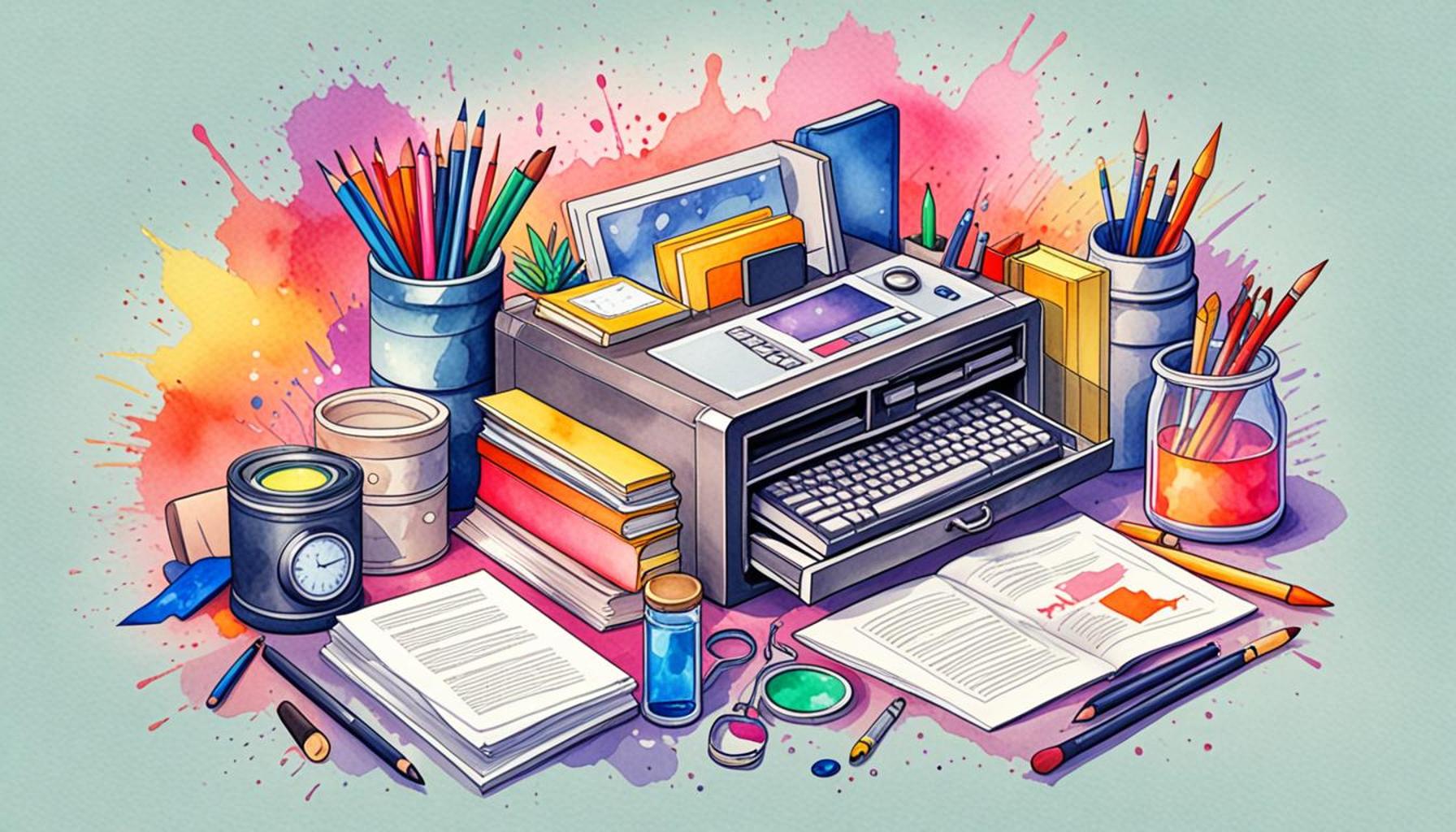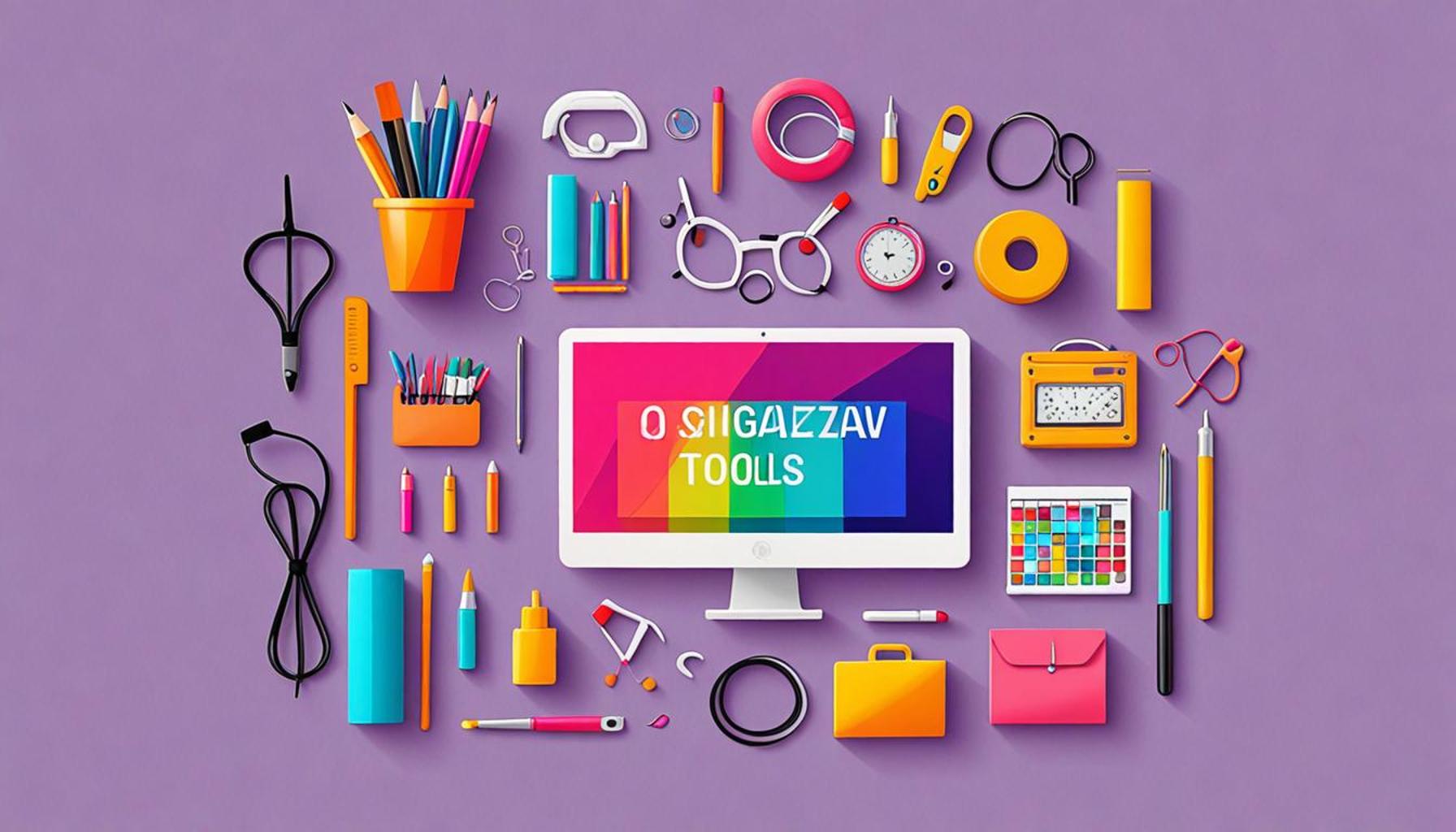How Digital Organization Can Boost Productivity and Creativity

Unlocking Potential Through Digital Organization
In today’s fast-paced world, staying organized is no longer just an advantage; it’s a necessity. The advent of digital tools offers a wealth of opportunities to enhance productivity and creativity in both professional and personal settings. Embracing these technologies can significantly transform how we manage tasks, projects, and ideas, leading to smoother operations and improved outcomes.
Consider the following benefits of digital organization:
- Streamlined Workflow: Tools like Trello and Asana provide teams with an intuitive interface for managing tasks efficiently. For instance, projects can be broken down into manageable pieces, assigned to team members, and tracked for progress. Such tools allow users to visualize their workload, set deadlines, and prioritize tasks, ensuring everyone is aligned, thus reducing confusion and duplication of efforts.
- Enhanced Collaboration: Cloud-based platforms like Google Workspace and Microsoft Teams enable seamless communication and file sharing among team members, regardless of their physical locations. This encourages a collaborative environment, as teams can brainstorm ideas through video calls, share documents in real-time, and provide instant feedback. The ease of collaboration can lead to richer, more diverse input, fostering innovation.
- Increased Focus: Digital organization minimizes distractions and keeps priorities clear. By utilizing task lists and schedule management apps, users can filter out non-essential tasks and focus on what truly matters. For example, apps like Todoist and Notion help users maintain a clear view of their commitments, thereby empowering them to allocate their time wisely and avoid burnout.
Moreover, research indicates that individuals who utilize digital organization tools report higher levels of satisfaction in both work quality and overall morale. This can be attributed to the fact that being organized allows for better time management, leading to more room for innovative thinking and creativity. When organization is prioritized, individuals rediscover lost hours that once seemed consumed by chaos, allowing for personal and professional growth.
As we delve deeper into this aspect, it is essential to explore specific digital tools that can revolutionize your work approach. Software like Notion, Evernote, and Slack not only facilitate information storage but also integrate seamlessly with other platforms to enhance productivity. The effectiveness of digital organization can serve as a game changer in an age where time is precious and efficiency is key.
In conclusion, understanding digital organization is crucial for anyone looking to enhance their capabilities. From managing complex projects to encouraging innovative brainstorming sessions, the right tools can empower individuals and teams to reach their full potential. Whether you are a small business owner or a corporate professional, embracing digital organization will pave the way for greater creativity and productivity in your daily operations.

DISCOVER MORE: Click here for daily minimalist practices
Enhancing Efficiency with the Right Digital Tools
In an era dominated by rapid technological advancements, the efficacy of digital organization lies not only in its ability to manage tasks but also in its profound impact on individual and team creativity. When we strip away the layers of chaos often associated with traditional organization methods, what emerges is a streamlined approach that encourages innovative thinking and maximizes productivity. To fully appreciate the transformative power of digital organization, it’s essential to examine specific tools that harness this potential.
One standout category of digital organization tools is project management software. Software like ClickUp and Basecamp have revolutionized how teams coordinate and execute their workflows. These platforms provide centralized spaces where team members can track their tasks, communicate in real-time, and adjust priorities on the fly. The visual elements of these tools, such as Gantt charts and Kanban boards, allow team members to see where contributions fit within the broader project scope, promoting a sense of ownership and accountability. This shared visibility not only clarifies individual roles but also sparks collaboration and creativity.
Moreover, note-taking and organization apps like Evernote and Microsoft OneNote transcend the traditional paper trail, offering users a dynamic way to capture ideas instantly. Imagine brainstorming during a meeting and being able to jot down thoughts in real-time, while simultaneously recording a voice note. These tools facilitate the documentation of ideas as they arise, eliminating the risk of losing valuable insights. Additionally, using tags and notebooks enables users to categorize and locate information effortlessly, ensuring that inspiration is never lost in the flow of daily tasks.
Another critical component to enhancing focus amid distractions is the utilization of digital calendars and scheduling tools. Applications like Google Calendar and Calendly help individuals plan their time effectively, allotting specific hours for work, meetings, and creative endeavors. These tools encourage users to block out distractions proactively, allowing for dedicated time windows to delve deep into projects without interruption. This not only fosters productivity but also creates opportunities for spontaneous creativity—a balance that is vital in today’s work environment.
- Improved Task Management: Utilizing digital task managers enables users to break larger projects into smaller, actionable steps.
- Accessible Cloud Storage: Tools like Dropbox and Google Drive allow for seamless access to files from any device, enhancing collaboration and productivity.
- Visual Organization: Mind-mapping software such as MindMeister can turn abstract ideas into structured plans, igniting the creative process.
The intersection of digital organization and creativity is more than just a trend; it’s a fundamental shift in how we approach work. Research has shown that when individuals employ these digital tools effectively, they report higher levels of satisfaction and creativity in their output. As we move further into an increasingly digital landscape, understanding and embracing these resources will be vital for anyone keen on enhancing their productivity and nurturing their creative capabilities.
How Digital Organization Enhances Workflow Efficiency
The world we live in is characterized by rapid change and cluttered environments, making digital organization more critical than ever. Effective digital organization goes beyond merely storing files; it involves creating structured systems that streamline everyday tasks. By utilizing various tools and platforms for task management, collaboration, and file storage, individuals can reduce time spent searching for resources. Tools like Trello, Asana, and Google Workspace enable users to manage their projects more effectively while ensuring that communication remains clear and concise.
Empowering Creative Thinking Through Clarity
One of the most significant advantages of digital organization is the liberation it provides for the creative mind. When the organizational structure is clear, it allows for greater focus on ideation and innovation. By minimizing distractions and establishing a tidy digital workspace, individuals can harness their creative juices more effectively. Additionally, cloud storage solutions, such as Dropbox or Google Drive, enable easy access to creative assets, providing inspiration at one’s fingertips.
| Advantages | Key Benefits |
|---|---|
| Increased Efficiency | Saves time by streamlining processes and reducing clutter. |
| Enhanced Collaboration | Facilitates teamwork through shared platforms, improving communication. |
Utilizing Data for Continuous Improvement
Another vital aspect of digital organization is the ability to analyze data effectively. Digital tools often come with analytics features that allow users to gauge their productivity levels. By understanding which strategies yield the best results, individuals can fine-tune their workflow, leading to continuous improvement. This cycle of evaluation and adjustment not only increases productivity but also fosters a space for experimentation, ultimately enhancing creativity.
DIG DEEPER: Click here to learn more
Fostering Collaboration and Communication in Remote Work Environments
The rise of remote work has dramatically reshaped how teams collaborate, necessitating effective digital organization strategies to maintain productivity and creativity. As more professionals work from home or in hybrid settings, the ability to communicate seamlessly across distances becomes pressing. Digital organization plays a pivotal role in enhancing collaboration, ensuring that teams remain cohesive and innovative, regardless of where they are physically located.
At the center of effective remote collaboration are communication platforms like Slack and Microsoft Teams. These tools not only facilitate real-time conversations but also host channels dedicated to specific projects or topics, allowing for focused discussions. By keeping all relevant communications organized within these channels, team members can refer back to previous conversations, preventing information from slipping through the cracks. Regular updates and shout-outs within these platforms can further nurture an environment of appreciation and creativity, providing team members with the motivation to share innovative ideas.
In addition to communication tools, collaboration software such as Miro and Trello encourages a visual approach to idea sharing. Miro, for instance, offers interactive whiteboards that allow team members to brainstorm together, irrespective of geographical barriers. This real-time engagement can spark creativity, as participants build on each other’s thoughts in an organized fashion. Trello, on the other hand, enables teams to map out tasks visually, helping everyone see how their contributions fit into the whole at a glance. With such platforms at their disposal, remote teams can transcend limitations and create a collaborative culture that thrives on shared ideas.
Moreover, integrating file sharing and document collaboration tools like Google Docs and Dropbox Paper streamlines the process of co-creating documents. Unlike traditional methods that often involve lengthy email threads with several attachments, these tools allow multiple users to work on a single document simultaneously. This not only saves time but also cultivates an atmosphere where creativity can flourish, as team members can inject their insights instantaneously, creating a dynamic exchange of ideas. The ability to leave comments and feedback directly on documents enhances clarity, ensuring that input is captured effectively.
- Time Zone Management: Tools like World Time Buddy assist teams spread across different time zones, contributing to better scheduling of meetings and ensuring everyone’s input is valued.
- Task Overlap Visualization: Platforms that illustrate overlapping responsibilities allow team members to avoid redundancy and focus on distinct areas where they can innovate.
- Feedback Loops: Implementing regular check-ins through digital organization can create structured feedback opportunities, enhancing collective creativity.
Digital organization isn’t just about productivity; it’s also essential for nurturing creativity within teams. With thoughtfully structured communication, collaboration, and project management tools, teams can leverage their collective strengths effectively. As remote work remains a fixture in today’s employment landscape, the ability to engage meaningfully in digital environments will likely determine a team’s success and creativity in addressing challenges and seizing new opportunities.
LEARN MORE: Click here to discover the benefits of emotional decluttering
Embracing the Future of Work through Digital Organization
In today’s fast-paced and ever-evolving professional landscape, digital organization is not merely a trend but a necessity for companies striving to enhance both productivity and creativity. The effective integration of digital tools—ranging from communication platforms to collaboration software—facilitates a seamless workflow, empowering teams to work together regardless of physical location. This remote-friendly approach not only fosters better communication but also cultivates a sense of community and shared purpose, which is vital for creative brainstorming.
Moreover, with the advent of advanced project management tools and real-time document collaboration, teams can transcend geographical barriers, leading to a more inclusive and dynamic working environment. As professionals adapt to hybrid and remote work setups, their ability to organize digitally will largely dictate their success in sharing ideas and driving innovation. The emphasis on structured feedback loops and visual task management ensures that every team member remains engaged and informed, paving the way for optimized performance and groundbreaking ideas.
As we move forward, it is crucial for organizations to continually explore and implement the latest digital organizational strategies. By doing so, they can unlock the potential for creativity that lies within diverse teams. Ultimately, those who harness the power of digital organization will not only boost productivity but also foster an innovative culture capable of tackling tomorrow’s challenges. Investing in technology and tools that promote efficient collaboration and communication will set the foundation for a thriving workplace, ready to embrace the opportunities of the future.


